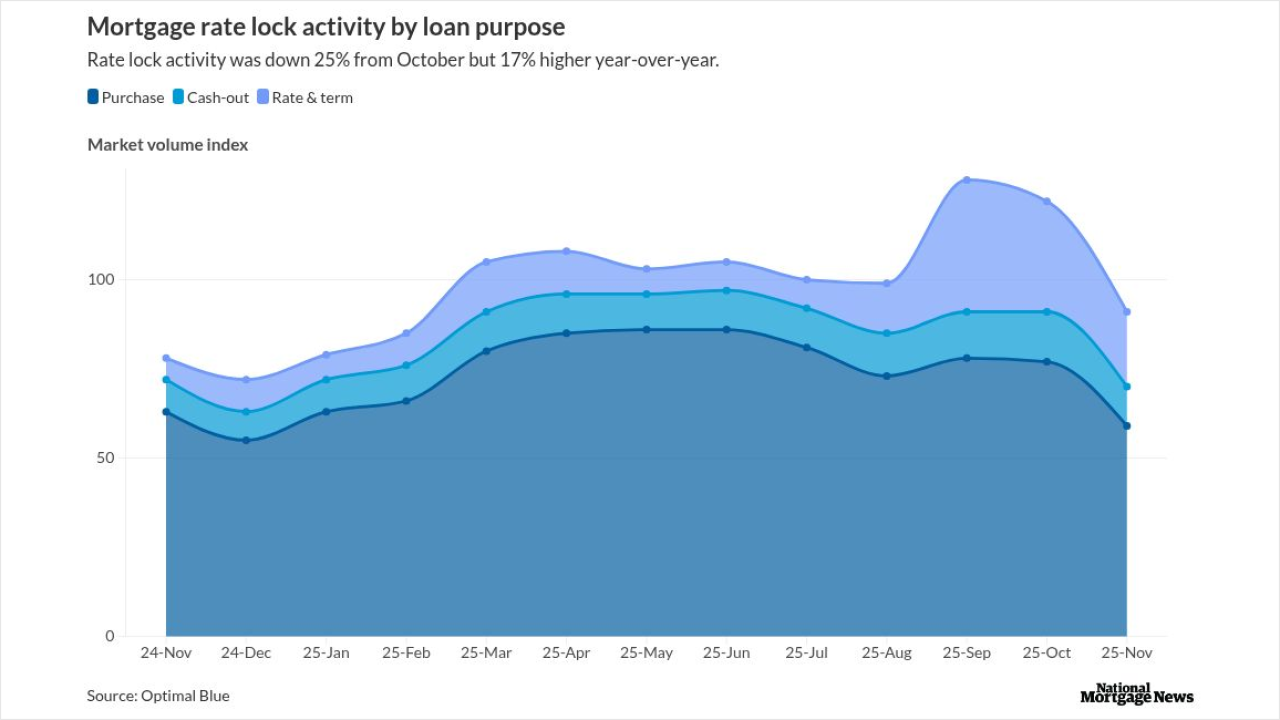As the asset securitization market wraps up the first quarter, market volatility stemming from the banking sector crisis has complicated the challenges that participants were already managing, such as bond pricing stemming from interest rate uncertainty and consumer creditworthiness, particularly in the sub-prime sector.
"Without question, liquidity is weaker than normal," said Rob Scott, a portfolio manager for structured products at Ameritas Investment Partners.
Non-prime, consumer lending ABS has seen the largest increase in delinquencies, with the percentage of delinquent non-prime borrowers at or above pre-pandemic levels for most loan types at the start of 2023, according to KBRA's report from February's SFVegas 2023 conference. Although prime delinquency rates are also up, they are below 2019 and early 2020 levels, as this borrower type likely has higher income and net worth and is more insulated from the effects of inflation, according to the KBRA report.
Investors have reacted to increased delinquency rates and economic uncertainty by moving to high investment-grade paper and to more liquid sectors such as prime auto and credit cards.

Some sponsors, in turn, are responding by selling only AAA or investment grade ABS and retain the riskier assets, because the AAA pricing is attractive but the pricing for lower tranches isn't as attractive, said Amy Sze, a managing director and head of J.P. Morgan's ABS Research team.
As a result, ABS financing remains attractive for high-quality issuers, even amid escalating interest rates, and investors are finding quality despite deteriorating consumer creditworthiness across several sectors.
"Generally, seasoned issuers in established areas such as auto, equipment and rental car seem to be doing okay," Scott said.
Auto 3-year sub-prime BB was 5.75%, up from a 10-week minimum of 5.25% as of March 23, according to J.P.Morgan's March 24 Global Securitized Products Research report. By comparison, one-year AAA auto prime was at 0.8%, up from a 10-week minimum of 0.35%, and three-year AAA student loans (FFELP) were 1.3% above Libor, up from a 10-week minimum of 1.15%.
Those types of widening spreads have made some ABS issues good value for two reasons. They compare favorably to corporate bonds, for example, which are not secured and are not backed by a reliable revenue stream. Also, the current widening provides an opportunity to buy high quality, liquid triple-A ABS from top tier sponsors at some of the cheapest levels in recent years, according to J.P.Morgan's March 17 update.
Top-tier benchmark sponsors are bigger and more liquid programs that have better seller-servicer profiles, Sze said. They are more resilient in high-inflation periods complicated by the possibility of a recession.
A backdrop of slumping issuance
This fight to quality is happening against a backdrop of slower ABS production. The Asset Securitization Report's Database of deals found that ABS production was $64.4 billion by the end of Q1 2023, down 49.7% from the $127.9 billion the market did in the same period last year. The auto ABS sector managed to do $34.5 billion, according to the ASR database, just shy of Q1 2022's production of $34.7 billion.
By March 24, according to J.P.Morgan's Global Securitized Products Research, ABS secured by equipment loans came in at $4.4 billion, down from $7.2 billion in the same period of 2022. While activity dipped in most ABS sectors, prime auto loan ABS production, in particular, was $11.6 billion by March 24, up from $10.7 billion in the same period of 2022, J.P.Morgan said.
"Issuers have a pipeline of originations, and mostly stick to their funding schedules," Sze said. "We continue to see a steady stream of issuers coming to the ABS market each quarter."
The sector breakdown
While the auto ABS sector has delivered value to investors, residential mortgage-backed securities (RMBS) credit performance was stable during the January collection period, according to KBRA's RMBS Credit Index, published March 10. This is likely due to house price appreciation over the last year, which has given most people positive equity in their homes and has led to them prioritizing mortgage payments.
Panelists at KBRA's SFVegas 2023 Conference expected depressed origination volumes for non-agency RMBS throughout 2023. However, they expected to see growth in home equity lines of credit (HELOC) and second lien origination as homeowners tap into accumulated equity.
In 2023, the market for student loan asset-backed securities (SLABS) continues to be affected by the same issues that slowed it down in 2022: rising spreads, financial pressure on student loan borrowers, slower prepayments and low refinancing due to uncertainty about the ending of the Biden administration's student loan forgiveness plan.
Among esoteric assets, KBRA reported a general deterioration in credit performance across securitized solar loan pools during the January 2023 collection period. It expects further deterioration in solar loan credit performance over the coming months. Recent trends in the sector include the lengthening of terms to 25-30 years, a slowdown in prepayment speed, and an increase in rates to 2.99% from 0.99% to account for the rising rate environment, the KBRA conference report said.



